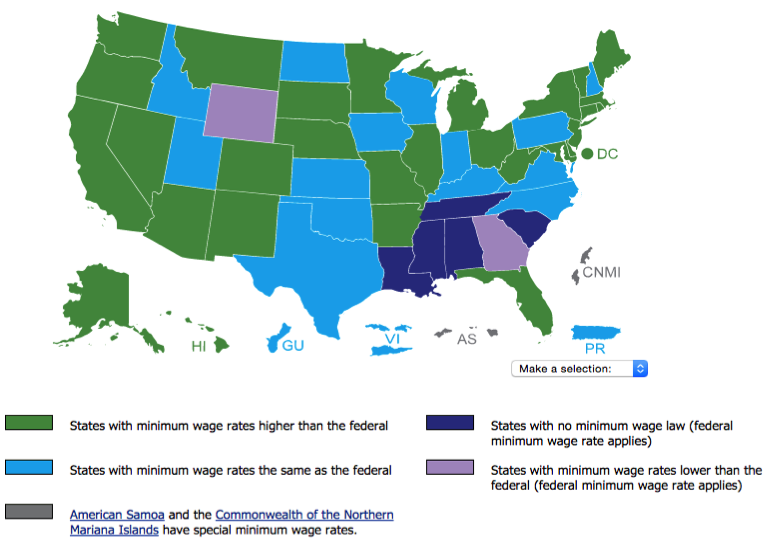A living wage is the minimum income necessary for a worker to meet his or her basic needs, while federal and state minimum wages are the minimum rates that all covered employers must pay all workers. They generally apply to most employers, with the state minimum wage applying to those who work in that state. When the federal and state minimum wage rates are different, the employee must be paid the higher of the two rates (Society for Human Resource Management, 2012). The federal minimum wage, first established in 1938 under the Fair Labor Standards Act, is currently $7.25/hour. This amount went into effect on July 24, 2009. Twenty-nine states and the District of Columbia have wage rates higher than the federal minimum wage, as do a large number of cities. The resources included below detail laws on the living and minimum wages, as well as reports and guidance pieces on the impacts of both.










